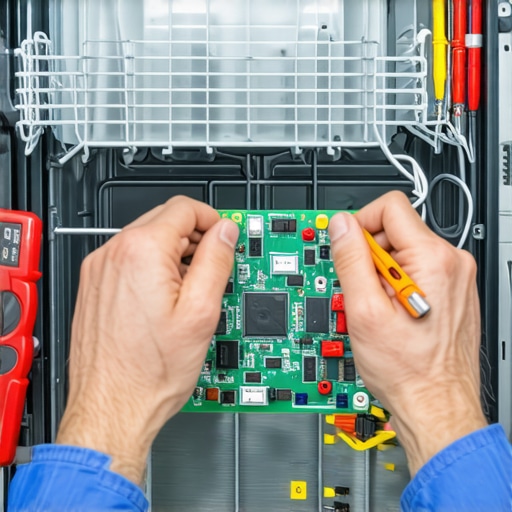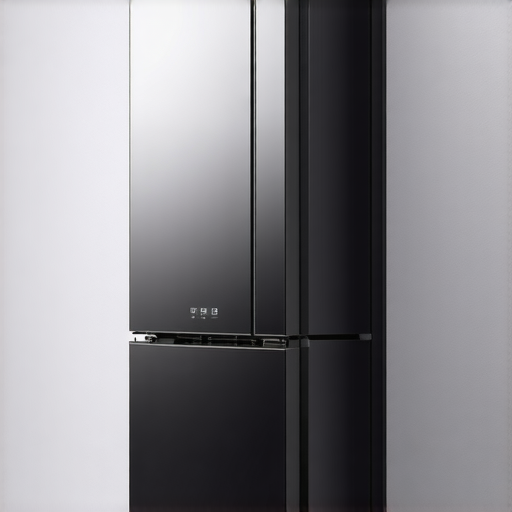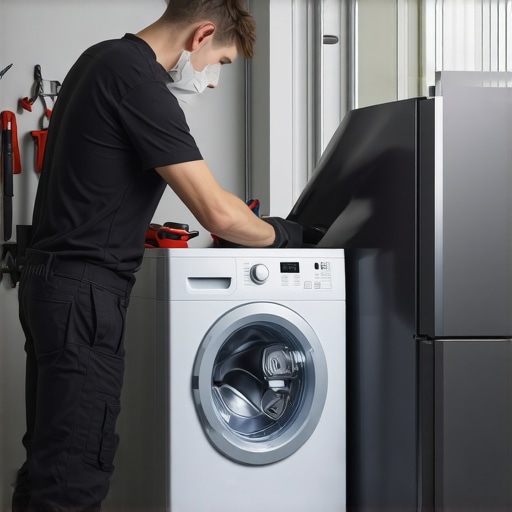My Unexpected Appliance Breakdown: A Wake-Up Call
One chilly Saturday morning, I was about to start my coffee maker when suddenly, it just stopped working. I felt a surge of frustration—who has time for appliance issues? That day, I learned the importance of understanding how to diagnose and repair appliances to truly maximize my warranty benefits.
Getting Personal with Appliance Troubleshooting
From my experience, knowing the basics of appliance diagnostics can save a lot of money and stress. I remember researching common issues with dishwashers, which are often covered under warranty. The first step for me was to check if the appliance was plugged in properly and if there were any obvious signs of damage. This simple check often prevents unnecessary service calls. For more comprehensive guidance, I refer to trusted sources like top appliance diagnostic tips that helped me understand the nuances of diagnosing complex problems.
Why I Believe Proper Diagnostics Are Your Best Ally
In my journey of appliance repair, I discovered that proper diagnostics not only extend the life of my appliances but also ensure I get the full benefit of my warranty. When my dishwasher started leaking unexpectedly, I used a step-by-step troubleshooting guide to identify a clogged drain hose. This proactive approach prevented further damage and kept my warranty intact. Sometimes, a quick diagnosis can reveal whether a problem is covered under warranty or if a repair is best handled by professionals. To sharpen my skills, I also explored detailed repair tips at expert repair tips.
How Can I Trust My Diagnosis and Avoid Costly Mistakes?
Trust in your diagnostic process comes from understanding your appliance’s workings and following systematic troubleshooting steps. I’ve learned that consulting reliable sources and sometimes asking the community can make a big difference. For example, the Energy Department’s advice on appliance maintenance has been a valuable resource for me, emphasizing the importance of regular checks and knowing when to call in the pros.
If you’re like me, eager to get the most out of your appliance warranty, I encourage you to share your experiences or ask questions below. Every bit of knowledge helps us all become more confident in our repair skills!
Unveiling the Secrets of Accurate Dishwasher Diagnostics
As an appliance repair enthusiast, I’ve learned that understanding the intricacies of dishwasher diagnostics can make all the difference in efficient repairs. When troubleshooting, it’s crucial to consider both common and complex issues. For instance, a dishwasher not cleaning properly could stem from clogged spray arms, malfunctioning pumps, or faulty sensors. Recognizing these signs early helps you target the root cause without unnecessary guesswork.
Deep Dive into Common Troubleshooting Strategies
One effective approach is to systematically inspect key components such as the door latch, float switch, and drainage system. Regularly cleaning filters and checking for obstructions can prevent many problems before they escalate. For more comprehensive guidance, I recommend exploring top appliance diagnostic tips, which provide detailed steps to identify issues swiftly and accurately.
Is Your Diagnosis Backed by Proven Evidence?
Trust in your diagnostic process is vital to avoid costly mistakes. For example, if your dishwasher leaks, examining the door seal and hoses can reveal whether the problem is superficial or requires professional intervention. It’s also wise to consult trusted sources such as the expert repair tips to verify your findings and ensure you’re on the right track. Remember, a methodical approach backed by reliable data prevents unnecessary service calls and preserves your warranty coverage.
What Expert Techniques Can Help You Confirm Your Troubleshooting Results?
One advanced technique involves using multimeters to test electrical components like thermostats and switches. This technical step can confirm whether a part has failed or if the issue is elsewhere. Additionally, inspecting the control board for burn marks or loose connections can uncover hidden faults. Combining these methods with visual inspections and functional tests creates a comprehensive diagnostic strategy. To deepen your knowledge, I suggest reviewing detailed guides on reliable diagnosis at top appliance diagnostic tips.
Have you experienced a stubborn dishwasher issue that seemed impossible to diagnose? Share your story below or ask for advice. Also, for those eager to master appliance diagnostics, exploring more expert tips can be a game-changer—check out expert repair tips for in-depth insights.
Refining My Diagnostic Skills: Beyond the Basics
Over time, I realized that mastering simple troubleshooting was just the beginning. To truly get ahead of complex dishwasher issues, I started diving into the intricacies of electrical systems and sensor functionalities. For example, understanding how the control board interacts with sensors like thermistors or float switches opened new avenues for diagnosing stubborn problems. I remember a time when my dishwasher refused to start, and a quick check of the control board revealed a tiny burn mark—an insight I gained only after reading detailed repair guides that go beyond superficial checks. Exploring authoritative resources like top appliance diagnostic tips helped me develop a more nuanced approach, emphasizing the importance of electrical testing and component analysis.
Can Advanced Diagnostics Prevent Major Failures?
Absolutely. In my experience, investing time in understanding the deeper workings of my dishwasher has saved me from costly replacements. When I noticed my dishwasher was leaking intermittently, I didn’t just replace the door seal upfront. Instead, I used a multimeter to test the door latch switch and inspected the hoses for hidden cracks. This comprehensive approach often uncovers hidden faults before they escalate. Moreover, consulting trusted sources like expert repair tips provided me with step-by-step procedures that improved my diagnostic accuracy, ensuring I tackled the root cause effectively. This proactive mindset aligns with my belief that thorough diagnostics are the best investment for warranty preservation and appliance longevity.
How Do I Validate My Diagnostic Conclusions?
Validation is crucial. I’ve learned that simply guessing isn’t enough—every diagnosis needs evidence. For instance, if I suspect a faulty pump, I don’t just assume—it’s essential to test the pump’s electrical connections and listen for operational sounds during a cycle. Using tools like multimeters and inspecting control boards for signs of damage provides concrete data, reducing the chances of unnecessary repairs. I also cross-reference my findings with reputable guides, which often highlight common failure points and troubleshooting heuristics. This systematic validation process ensures my repairs are precise and my warranty remains intact. For those wanting to deepen their diagnostic skills, I highly recommend reviewing comprehensive guides at top appliance diagnostic tips.
What Are Some Subtle Signs That Indicate Complex Dishwasher Issues?
Sometimes, problems are not immediately obvious. For example, a dishwasher might fill with water but not drain properly, leading me to consider subtle clues like unusual odors or slight delays in cycle completion. These signs often point to intermittent sensor failures, clogged filters, or partial blockages in the drain pump. Recognizing these nuances requires experience and keen observation—something I gained through trial, error, and consulting detailed troubleshooting resources. As I explored deeper, I learned that advanced diagnostic techniques, such as inspecting control board firmware or testing sensor resistance values, could reveal issues invisible to the naked eye. Incorporating these insights, I now approach complex problems with a methodical plan, ensuring I don’t overlook the small details that make all the difference. If you’re eager to explore these advanced strategies, check out expert repair tips for more detailed guidance.
Have you encountered a perplexing dishwasher problem that challenged your diagnostic skills? Share your experiences or ask questions below—I believe that sharing knowledge is the fastest way to grow. Embracing a mindset of continuous learning and curiosity has transformed my approach to appliance repair from guesswork to confidence, and I encourage you to explore these advanced diagnostic techniques to elevate your skills as well.
Unlocking the Secrets Behind Complex Dishwasher Failures
As my journey into appliance repair deepened, I realized that many issues stem from nuanced electrical and sensor malfunctions that often escape initial inspections. For instance, a dishwasher that refuses to start despite appearing normal can hide a faulty control board, a problem that requires a keen eye and specialized tools to diagnose accurately. I learned that delving into the control circuitry, including inspecting for cold solder joints or burnt components, can be instrumental in uncovering hidden faults. Consulting authoritative sources like top appliance diagnostic tips has been invaluable in honing my ability to interpret subtle signs of electrical issues that are often overlooked by novices.
Why Do Sensor Failures Often Go Unnoticed and How to Detect Them?
Sensor malfunctions, such as issues with temperature sensors or float switches, can cause erratic dishwasher behavior, yet they often go unnoticed until a complete failure occurs. I discovered that testing sensor resistance with a multimeter during different cycle phases can reveal inconsistencies indicative of impending failure. For example, a thermistor providing inconsistent readings can cause the control board to misjudge water temperature, leading to cycle errors or incomplete cleaning. This diagnostic process, detailed in advanced repair guides, helps preempt larger failures and preserves warranty coverage by addressing issues early. For those eager to deepen their understanding, exploring expert repair tips offers comprehensive insights into sensor testing techniques and more.

Can Firmware Glitches Trigger Persistent Dishwasher Problems?
Indeed, firmware issues on control boards can mimic hardware failures, causing symptoms like unresponsive cycles or error codes that are difficult to diagnose visually. I encountered a case where a firmware glitch caused the dishwasher to randomly reset, and updating the control board firmware resolved the problem. This experience underscored the importance of considering software-related issues alongside physical component analysis. Regularly checking for firmware updates from manufacturers and reading technical bulletins, as recommended by industry experts, can prevent such elusive failures. The process of diagnosing firmware issues requires a blend of software knowledge and hardware troubleshooting skills, a combination I developed through dedicated research and hands-on practice. For an in-depth understanding, I recommend reviewing resources available at top appliance diagnostic tips.
How Do I Systematically Confirm My Diagnostic Findings in Advanced Troubleshooting?
Confirming diagnostic conclusions involves a structured approach that combines electrical testing, component inspection, and process verification. For example, when suspecting a faulty pump, I first listen for operational sounds during a cycle, then use a multimeter to verify electrical continuity, and finally inspect the pump for physical damage or clogs. Cross-referencing these findings with detailed repair guides ensures accuracy and helps avoid unnecessary replacements. Additionally, employing diagnostic tools like oscilloscopes or firmware analyzers can provide deeper insights into control board health and sensor signals. Engaging with expert communities and reading case studies further enhances diagnostic confidence. If you’re committed to refining your skills, exploring comprehensive guides at top appliance diagnostic tips will significantly elevate your troubleshooting game.
Have you faced a particularly perplexing dishwasher issue that challenged your diagnostic skills? Share your story below or ask for advice. Remember, continuous learning and meticulous testing are the keys to long-term success in appliance repair, and I encourage you to explore these advanced strategies to become a true troubleshooting expert.
Things I Wish I Knew Earlier (or You Might Find Surprising)
1. The Power of Simple Checks
One lesson I learned the hard way was that a quick plug and drain hose inspection can save a lot of trouble. Early on, I used to jump straight into complex diagnostics, but now I start with basic checks—like ensuring the appliance is plugged in and that filters are clean. This simple step often reveals the root cause and prevents unnecessary repairs.
2. Not All Problems Are Equal
I realized that symptoms like leaks or error codes can stem from different issues—clogged filters versus faulty sensors. Knowing how to differentiate these makes troubleshooting more effective. Exploring trusted sources, such as top appliance diagnostic tips, has helped me develop a more nuanced approach.
3. The Importance of Electrical Testing
Advanced troubleshooting often involves testing electrical components with a multimeter. I was initially intimidated by this, but understanding how to test switches and sensors has been a game changer. It’s like giving my dishwasher a mini health check, which keeps my warranty safe and my repairs precise.
4. Firmware Glitches Are More Common Than You Think
Sometimes, a dishwasher won’t respond because of a firmware bug, not a hardware failure. Updating the control board firmware, as I did once, fixed the issue instantly. Regularly checking for updates from manufacturers can save you hours of confusion and unnecessary repairs.
5. Subtle Signs Require Keen Observation
Minor delays or odd odors can be hints of deeper problems. Paying attention to these subtle clues, and cross-referencing with detailed guides, helps catch issues early before they escalate. I’ve found that a keen eye is vital for complex troubleshooting.
6. Combining Visual Inspections with Data
For complex failures, inspecting control boards for burn marks and testing sensors resistance provides a fuller picture. This layered approach ensures I don’t miss hidden faults, keeping my warranty intact and my appliance running smoothly.
Resources I’ve Come to Trust Over Time
- Energy Department’s Advice: Offers practical tips on appliance maintenance and troubleshooting that I consider a must-read for every homeowner.
- Manufacturer’s Technical Bulletins: Staying updated with firmware updates and technical notices helps me avoid firmware-related glitches.
- Online Repair Communities: Forums like RepairClinic and ApplianceJunkies are gold mines for real-world troubleshooting tips from experienced repair enthusiasts.
- Professional Repair Guides: Detailed manuals and repair videos from trusted sources give me confidence in diagnosing complex issues.
Parting Thoughts from My Perspective
From my personal experience, mastering dishwasher diagnostics has transformed how I care for my appliances. Understanding the nuances—from simple checks to electrical testing—helps me save money and extend the life of my appliances. It’s a rewarding journey of continuous learning, and I encourage anyone interested in appliance repair to explore these techniques. If this resonated with you, I’d love to hear your thoughts. Share your experiences or ask questions below, and let’s grow together in this troubleshooting adventure!

